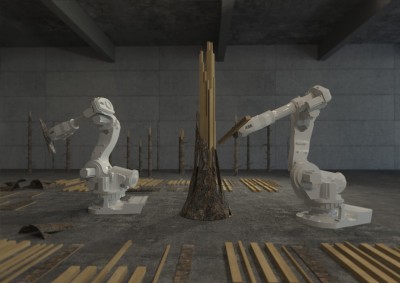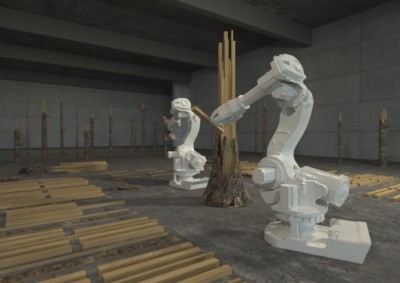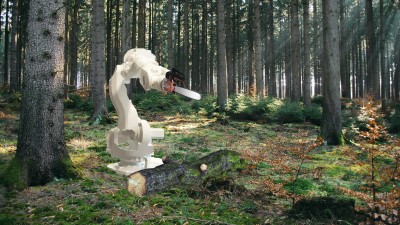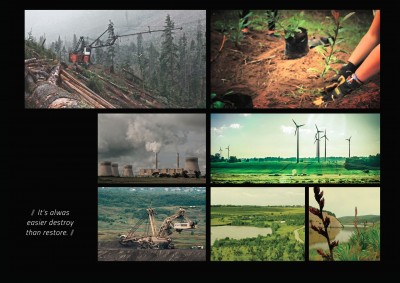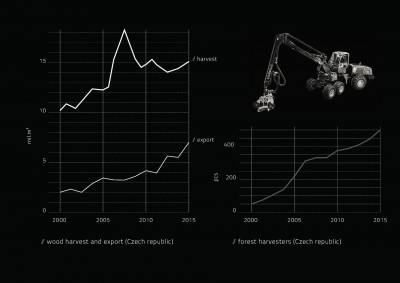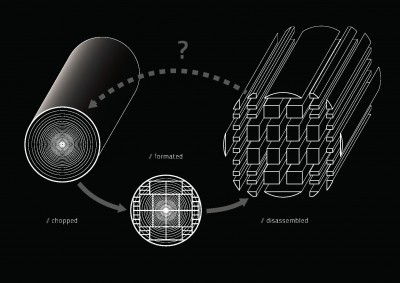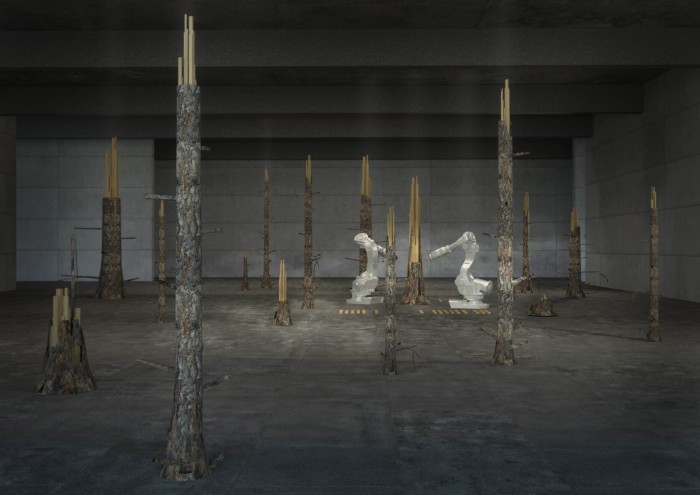
RE/FORESTATION 4.0
- category / ART
- year / 2017
- authors / Jan Tůma Jindřich Ráftl
- cooperation / Jan Nálepa
„It’s always easier to destroy, than restore.“
environment and industry 4.0:
We explore relation between environment and industry 4.0. Effectivity increase of industry in the form of ever-growing production and consumption is in the direct conflict with lasting sustainability, which is a necessity for our survival in the global scale. Tangible schizophrenia of contemporary society’s course is a consequence of following set trends that are confronted with phenomena influencing our environment. We assume the ecological crisis on the planetary scale is upon us and that its next phase will bring many changes into our lives. Smaller and bigger collapses has been striking our species since the beginning, but it is only now that the scope of their impact has become global and irreversible.
Fully automated industry is presented as a tool for improving people’s lives and has become relentless destroyer of the environment where the very same people live. We use more and more advanced instruments for the extraction of natural resources. Therefore we leave ever deeper cuts on the face of Earth. Machines are just accelerating this irreversible process. It is a paradox that the same machines that we use for such exploitation are useless for rebuilding what has been damaged. Blind effectivity-driven orientation without notion of consequences or means of remedy is a common factor in most industrial fields.
a forest and a machine:
We focus on local context within this global topic, ones that directly impact our immediate surroundings. Forest is a key biotop of Central Europe. Its positive influence on local climate is fundamental. At the same time, it is a material resource and current economy demands for it to be exploited as effectively as possible. Our intention is primarily to address this cyclical automatism of overproduction-overconsumption and its possible result, which is an environment uninhabitable for mankind. The more sophisticated the means are, the faster the exploitation of resources is. In the case of forests this process is irreversible. Modern harvesters can cut down a tree that has been growing for decades in mere seconds. Attempts at making this process faster result in exhaustion of the soil.
inversion of the process:
Our concept deals with the hypothesis of inversion of the process of cutting and sawing of timber. We use tools and elements made by this process to recreate the original natural form, for wood is not just a material, it is a tissue of living organisms. Organisms that are fragile and yet essential for our survival. Machines, despite their surgical accuracy, are not capable of mending the wounds that they caused themselves. This reveals the impossibility of a simple paradigm inversion. Attempts at such inversion are unconvincing imitations of the original - basically just unfunctional assemblages.
installation description:
Similarly to the process of destruction and recovery, the installation itself contains certain dichotomy. Its destructive part takes place in the forest, where an industrial robot turns tree trunks into timber. This process is recorded and then present at the installation in the form of large projection and serves as a background to the main motive of renewal of the original natural forms.
The mentioned renewal is executed by a pair of industrial robots, equipped with products of cutting and sawing - a timber of exact shapes and dimensions, made out of exactly one tree trunk. Mathematically, their total sum should therefore be a reassembled tree, but the machines are operating only based on algorithms and logic, which seems desperately inefficient, even naive, when dealing with recreation of delicate bonds that has been severed. So despite the fact that elements of corresponding dimensions are placed on appropriate places, the emerging compound lacks the most important thing - life. The creations of this slightly bizarre process are not dissimilar to Frankenstein’s monster and in some sense share its fate. They both represent a warning of the irreversibility of human interventions into natural structures that keep us and our environment alive.
The by-product of the whole process are the assemblage objects that stand as a memento of the above mentioned themselves. However, the more important thing is the process itself and its perception by the visitors. We use new technologies to uplift and deepen metaphorical and poetic potential of the installation. They serve merely as a tool for reaching its goal, they are not the purpose or the result.
